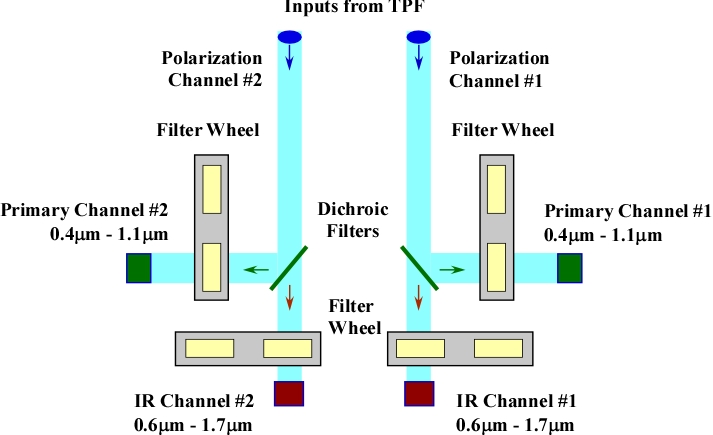|
|
|
 |
 |
Coronagraph Exploration Camera
(CorECam)
CorECam addresses the main requirements and science program for the Terrestrial Planet Finder Coronagraph's (TPF-C) primary camera. CorECam interfaces with TPF-C's starlight suppression system (SSS) and provides modules for imaging in the visible and in the near-infrared. The design of CorECam is simple and efficient, providing a high optical through-put combined with high quantum efficiency detectors. The detectors are operating in photon counting mode to support long exposure times on low-flux targets and zero read noise. The visible filter set was choosen to optimize the detection and characterization of terrestrial planets. It includes a survey filter, F550W, two broad redder filters, F650W and F750W, for spectral slope detection, and several medium-width filters, F475M, F525M, F575M, and F675M, and narrow-width filters for in-depth characterization. Similarly, the infrared channels filter sets comprise of broad-, medium-, and narrow-width filters. The principal investigator of the CorECam study is Dr. Mark Clampin, GSFC.  Schematic of the CorECam optical design.
|
|